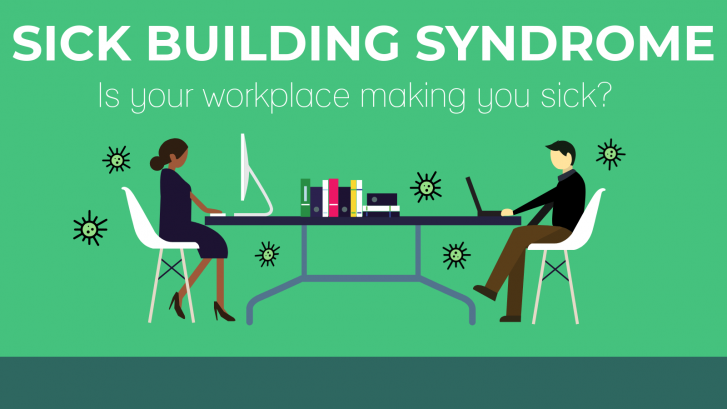WHAT IS SICK BUILDING SYNDROME? CAUSES, SYMPTOMS AND PREVENTION
 |
| Picture from paint-inspection.co.uk |
Sick Building
Syndrome (SBS) is a sickness caused by being in a building or enclosed space. This
syndrome appears to be linked to time spent in a building, where this condition
usually affecting office workers, typically marked by headaches and respiratory
problems, attributed to unhealthy or stressful factors in the working
environment such as poor ventilation.
The causes of SBS is;
- Inadequate ventilation
- High levels of dust
- Rooms with poor lighting
- Outdated computer displays that cause eye strain
- The presence of mold or fungus
- Cigarettes smoke - one of the major sources of several VOCs
- Formaldehyde (mostly found in wood furniture and floors)
- Asbestos – usually used in a variety of building construction materials for insulation and as a resistant to fire
- Chemicals in the air - cleaning products, paint, adhesive, carpet, upholstery, manufactured wood product and pesticide bring a whole unhealthy host of chemicals into our spaces? We breathe these in every day.
- Carbon monoxide
- Ozone from the use of printers, photostats machines and fax machines
- High levels of stress at school or work
- Low workplace morale
- Heat or low humidity
- Noisy work environment
| Picture from Nok-Out Odor Eliminator |
You may mistakenly self-diagnose
yourself as having a flu or cold but actually you may be having SBS, where most
of the symptoms effect your skin, respiratory and nervous systems.
Among the possible SBS includes;
- Itchy, irritated, dry or watery eyes
- Nasal congestion – stuffy nose
- Throat soreness OR throat irritation
- Dry, itchy skin or unexplained rashes
- Headache/dizziness, tiredness/laziness, or difficulty concentrating.
- Breathing difficulties
- Tightness in the chest
- Allergy-like symptoms, such as sneezing
- Forgetfulness
- Fatigue, nausea, body aches, fever/chills

Prevention and possible treatment for SBS;
- Use cleaning products with low fumes OR no fragrances.
- Vacuum regularly to remove dust.
- Get a test for possible indoor mold or fungus.
- Update computer monitors and other display systems.
- Change lights as needed - Consider investing in LED or blue lights for less energy output.
SBS is due to poor indoor air quality that lead to discomfort, ill health, and, in the workplace, absenteeism and lower productivity. An increase in the building ventilation rate can significantly reduce SBS issues besides improving the ventilation effectiveness and the reduction in sources of indoor air pollutants. For new buildings, ultra-fine particles are the common nuisance that need to be paid attention to as they can also influence SBS. You may need an IAQ assessor to do inspection on your building…
The raising public awareness regarding the importance of air ventilation towards health has induced concern about the IAQ. Many mitigation strategies have been implemented to solve indoor air quality issue over the years which require the involvement of building management from areas in:
1) Facility management
2) Housekeeping
3) Policy making
4) Staff training
To reduce occurrence of SBS among office workers and making the working environment safer and healthier for productivity, HARTA willing to provides your company an indoor air quality (IAQ) services. HARTA always believe that good indoor air quality (IAQ) is required for a healthy indoor work environment.




